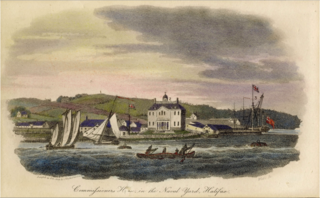
Scotland Yard is the headquarters of the Metropolitan Police, the territorial police force responsible for policing Greater London's 32 boroughs. Its name derives from the location of the original Metropolitan Police headquarters at 4 Whitehall Place, which had its main public entrance on the Westminster street called Great Scotland Yard. The Scotland Yard entrance became the public entrance, and over time "Scotland Yard" came to be used not only as the common name of the headquarters building, but also as a metonym for the Metropolitan Police Service (MPS) itself and police officers, especially detectives, who serve in it. The New York Times wrote in 1964 that, just as Wall Street gave its name to New York's financial district, Scotland Yard became the name for police activity in London.

The Metropolitan Police Service (MPS), formerly and still commonly referred to as the Metropolitan Police, is the territorial police force responsible for law enforcement and the prevention of crime within the ceremonial county of Greater London. In addition, it is responsible for some specialised matters throughout the United Kingdom, including national counter-terrorism measures and the protection of specific people, such as the monarch and other members of the royal family, members of the government, and other officials.
A corporation sole is a legal entity consisting of a single ("sole") incorporated office, occupied by a single ("sole") natural person. This structure allows corporations to pass without interruption from one officeholder to the next, giving positions legal continuity with subsequent officeholders having identical powers and possessions to their predecessors. A corporation sole is one of two types of corporation, the other being a corporation aggregate.

The Commissioner of Police of the Metropolis is the head of London's Metropolitan Police Service. Sir Mark Rowley was appointed to the post on 8 July 2022 after Dame Cressida Dick announced her resignation in February 2022.
Sir John Reginald Hornby Nott-Bower was Commissioner of Police of the Metropolis, the head of the London Metropolitan Police, from 1953 to 1958. He was the first career police officer to hold this post.

Ian Warwick Blair, Baron Blair of Boughton, is a British retired policeman who held the position of Commissioner of Police of the Metropolis from 2005 to 2008 and was the highest-ranking officer within the Metropolitan Police Service.

Lieutenant-Colonel Sir Edmund Yeamans Walcott Henderson was an officer in the British Army who was Comptroller-General of Convicts in Western Australia from 1850 to 1863, Home Office Surveyor-General of Prisons from 1863 to 1869, and Commissioner of Police of the Metropolis, head of the London Metropolitan Police, from 1869 to 1886.

Lieutenant-Colonel Sir Charles Rowan was an officer in the British Army, serving in the Peninsular War and Waterloo and the joint first Commissioner of Police of the Metropolis, head of the London Metropolitan Police.

Captain William Hay CB was the second and last junior Joint Commissioner of Police of the Metropolis, one of two heads of the London Metropolitan Police.
John Wray was a barrister and the first Receiver of the London Metropolitan Police, its chief financial officer, to which office he was appointed on 7 July 1829.
Assistant Commissioner of Police of the Metropolis, usually just Assistant Commissioner (AC), is the third highest rank in London's Metropolitan Police, ranking below Deputy Commissioner and above Deputy Assistant Commissioner. There have usually been four officers in the rank; however, as of December 2023, there are seven owing to the appointment of a new portfolio, Trust and Legitimacy, and the continuing secondments of Rob Beckley to Operation Resolve, the criminal investigation into the Hillsborough Disaster, and Stephen Kavanagh to Interpol. There have also, at times, been five or six.

Birmingham City Police was the police service responsible for general policing in the city of Birmingham from 1839 to 1974. The force was established by a special Act of Parliament in 1839, and was amalgamated as of 1 April 1974 with the West Midlands Constabulary and parts of other forces to form the West Midlands Police by the Local Government Act 1972.
Metropolitan Police Act is a stock short title used for legislation relating to the Metropolitan Police.

Royal Naval Dockyard, Halifax was a Royal Navy base in Halifax, Nova Scotia. Established in 1759, the Halifax Yard served as the headquarters for the Royal Navy's North American Station for sixty years, starting with the Seven Years' War. The Royal Navy continued to operate the station until it was closed in 1905. The station was sold to Canada in 1907 becoming His Majesty's Canadian Dockyard, a function it still serves today as part of CFB Halifax.
Sir Andrew Charles Howard was the third Assistant Commissioner (Executive) of the London Metropolitan Police, serving in the post from 1890 to 1902. He was the first career police officer to be appointed an Assistant Commissioner.
Major Sir Edwin Frederick Wodehouse, was a senior British police officer, serving as Assistant Commissioner of both the City of London Police and the Metropolitan Police.
Sir Herbert Alker Tripp CBE, usually known as Alker Tripp or H. Alker Tripp, was a senior English police official who served as an Assistant Commissioner of the London Metropolitan Police from 1932 to 1947.
The history of the Metropolitan Police in London is long and complex, with many different events taking place between its inception in 1829 and the present day.

The history of law enforcement in the United Kingdom charts the development of law enforcement in the United Kingdom and its predecessor states. It spans the period from the Middle Ages, through to the development of the first modern police force in the world in the nineteenth century, and the subsequent modernisation of policing in the twentieth and twenty-first centuries.
Sir John FitzGerald Moylan CB CBE was a senior British civil servant and author.










